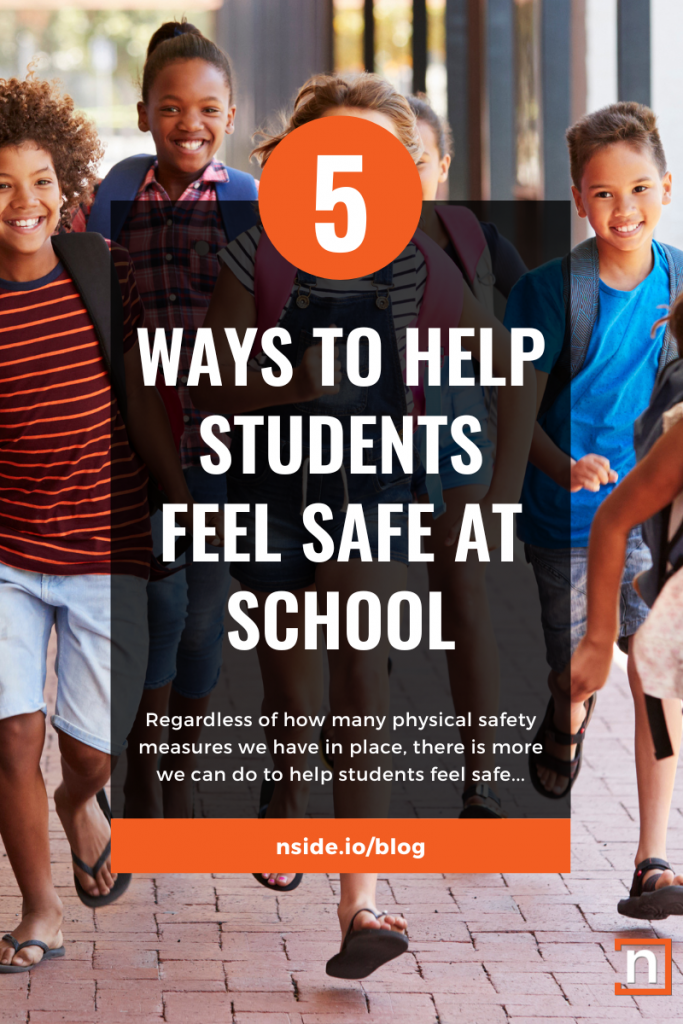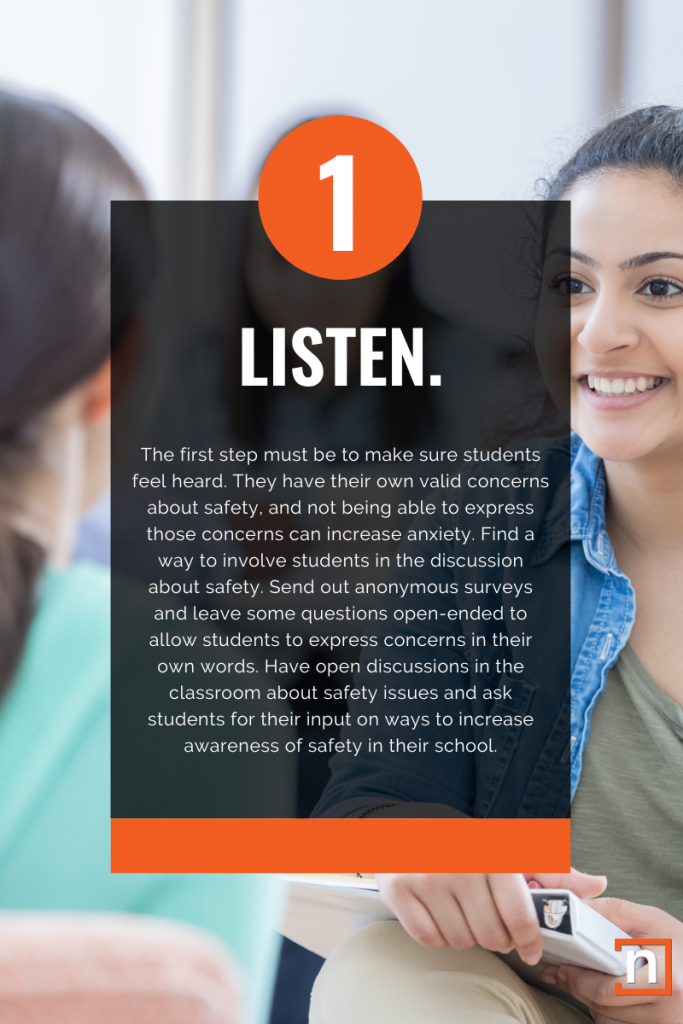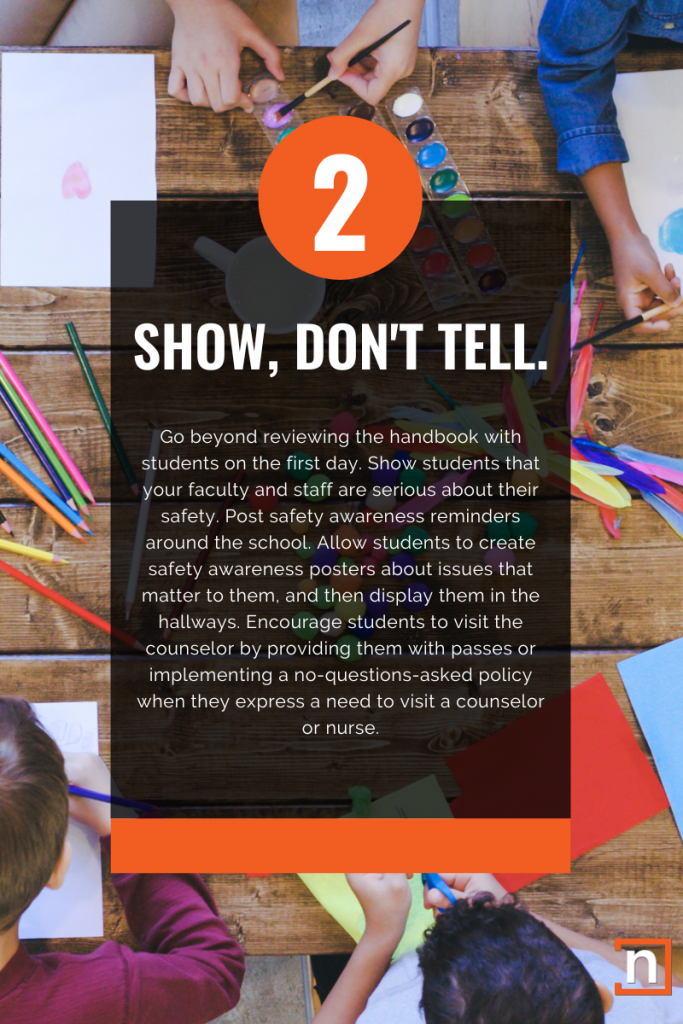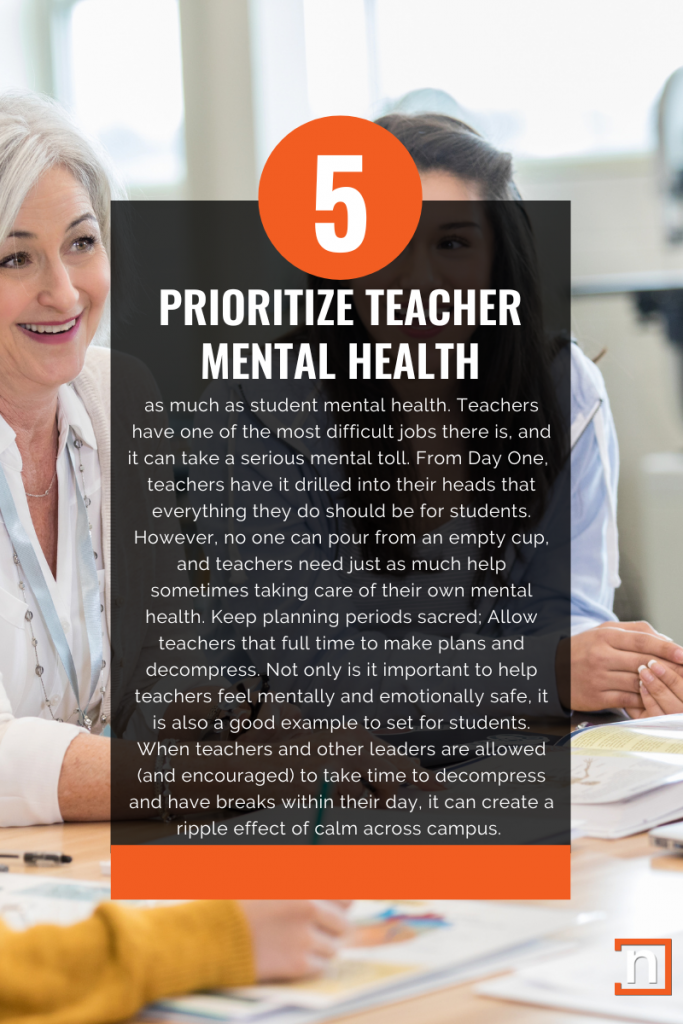As we start the new school year, the atmosphere is energized and focused. The teachers have finished back-to-school training, students have been reviewing rules and drills, and safety procedures are fresh in everyone’s minds. What we know from years past is that this energy will eventually wane, and routine will override awareness. So how do we overcome complacency and maintain an environment of safety around our schools?
One common mistake school districts make is putting too much emphasis on response to, rather than prevention of crisis situations. Lockdown drills, fire drills, tornado drills- all of these are excellent practice for response to crises, but what does our practice for prevention look like?
In their article “School Safety: What Really Works,” school psychology experts Katherine Cowan and Cathy Paine suggest that the key to reinforcing school safety is a balance of emphasis on physical safety and psychological safety. Psychological safety is a vital component to crisis prevention – an element often overlooked in emergency planning in schools. “Reasonable physical security—such as locked doors; lighted and monitored hallways; and visitor check-in, checkout systems—must be combined with violence prevention and positive behavior supports,” says Cowan and Paine.
A few of their recommendations for creating this balance are listed below:
- Create a safe, supportive school climate (e.g., school-wide behavioral expectations, caring school climate programs, positive interventions and supports, and psychological and counseling services).
- School climate is a complicated concept that goes beyond staying positive and encouraging teachers to be warm and nurturing. Remember that teachers also need to feel safe and supported in order to do their jobs effectively.
- This means staying consistent with school-wide expectations and consequences, providing quick and efficient response to escalation in the classroom, and encouraging mental healthcare for all involved in the educational environment.
- De-stigmatizing mental health issues and counseling may also be a way to help boost school climate. Have counselors visit classrooms for mental health awareness activities. Make counselors and psychologists visible and approachable for all students. A big part of school climate is not just making mental healthcare available, but encouraging all students to take part and find ways to cope with the stress of everyday life.
- Put violence prevention programs (e.g., bully-proofing, social skill development, conflict mediation) in place.
- This can be done at the classroom level and as a school-wide initiative. Allowing teachers time to address social skills and helping students understand the causes and consequences of bullying is essential to violence prevention.
- Addressing conflict at its roots instead of simply disciplining students in the aftermath is also vital. Involving school counselors in disciplinary issues, rather than just issuing punishment, can be extremely helpful in preventing future violence.
- Encourage students to take responsibility for their part in maintaining safe school environments, including student participation in safety planning.
- Insisting that students take ownership of their safety and providing a way for students to report on suspicious activities are essential parts of a safe environment that can be reinforced universally. Students must be involved in their own safety, as highlighted in our previous blog.
- Reiterate school rules and request that students report potential problems to school officials.
- Again, trust is crucial to student reporting. Explaining the reasoning behind school rules and helping students take ownership of the rules can help with building trust and accountability.
- Dictating rules and demanding compliance is not the way to build trust or promote a positive school climate. Get students involved in making rules and setting boundaries within the classroom. The more ownership they take, the more likely they will be to hold their peers to those standards.
- Create anonymous reporting systems (e.g., student hot lines, suggestion boxes, and “tell an adult” campaigns).
- Remember, however, that the foundation of an anonymous reporting system is an environment of trust between students and adults in the school. If students do not trust the adults in charge, they will not report, regardless of anonymity.
- It takes a tremendous amount of courage for students to report their peers or even adults who are engaging in suspicious or dangerous behavior. Taking students seriously when they report is crucial to building trust and ensuring that students know action will be taken if they take the risk to report.
- Develop threat assessment and risk-assessment procedures and teams for conducting the assessments.
- Many schools have threat assessment procedures, but the process is often long and cumbersome, and can cause confusion if not well-organized.
- Organize the threat assessment process and train those involved thoroughly. These procedures should never be treated as mere formalities. Threat assessment is a foundational element of preventing violence in schools.
The nSide platform was designed to make maintaining an environment of safety easier and more practical for teachers, administration, and districts. From anonymous tip submission to online behavioral assessment, the nSide platform digitally integrates multiple tools for maintaining an environment of safety in your school or district. Contact us today at help@nside.io so that we can help you make your school as safe as possible.
Sources:









